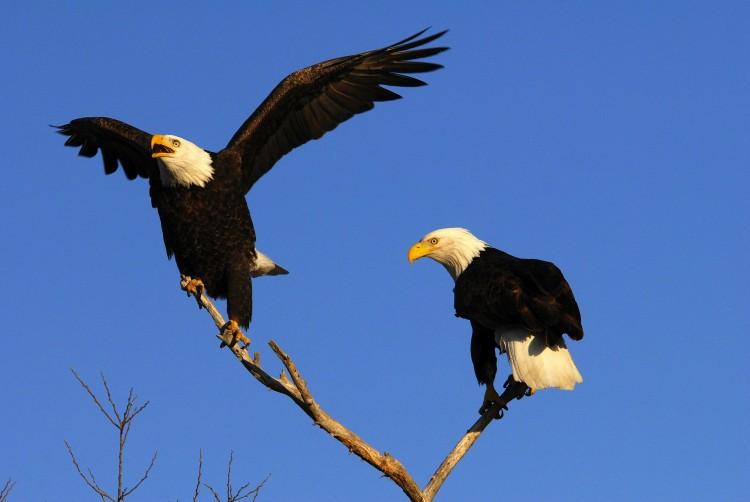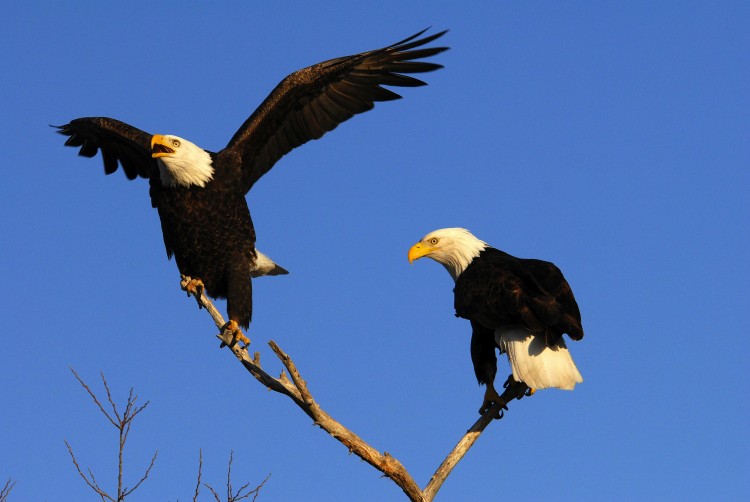The return of the American bald eagle has been described by conservationists as one of the most triumphant recoveries in modern wildlife. As pesticides have kept the eagles’ unborn eggs from developing in years past, strong conservationist efforts from both public and private sponsors have stepped up to keep these birds from disappearing.
However, the eagles are not out of the woods yet, as many conservationists groups are keeping a close eye and pressuring government agencies for more protective efforts.
The bald eagle was chosen as the symbol of the United States during the inception of the country. However, with Western development in the 1800s combined with industrialization, the bald eagle, like many animal species, became threatened.
One of the early threats to the eagle came from hunters and ranchers who killed the birds to keep them from feeding on their chickens and livestock. But the biggest threat to the eagle was a pesticide called DDT that ran into local waterways, poisoned fish that the birds ate, and caused the females to lay eggs with brittle shells.
Throughout the 20th century, the bald eagle population continued to dwindle. In 1940, the Bald and Golden Eagle Protection Act was enacted, and it was enforced by the U.S. Fish and Wildlife Service (USFWS). The act states that no one shall hunt, disturb, or otherwise interfere with these birds.
During the formation of this country, there were approximately 100,000 nesting pairs, and by 1963 there were only about 400. DDT was officially banned in 1972.
“We were down to about 20 nesting pairs in the state of Oregon in the ‘50s and ’60s, and then on into the ‘70s was when we started our recovery,” said wildlife biologist Ralph Opp, according to “This American Land,” episode 210, on PBS.
The Klamath Basin in Southern Oregon is considered by birdwatchers to be one of the best places in the United States to spy on the bald eagle, which is notorious for not letting humans get too close.






